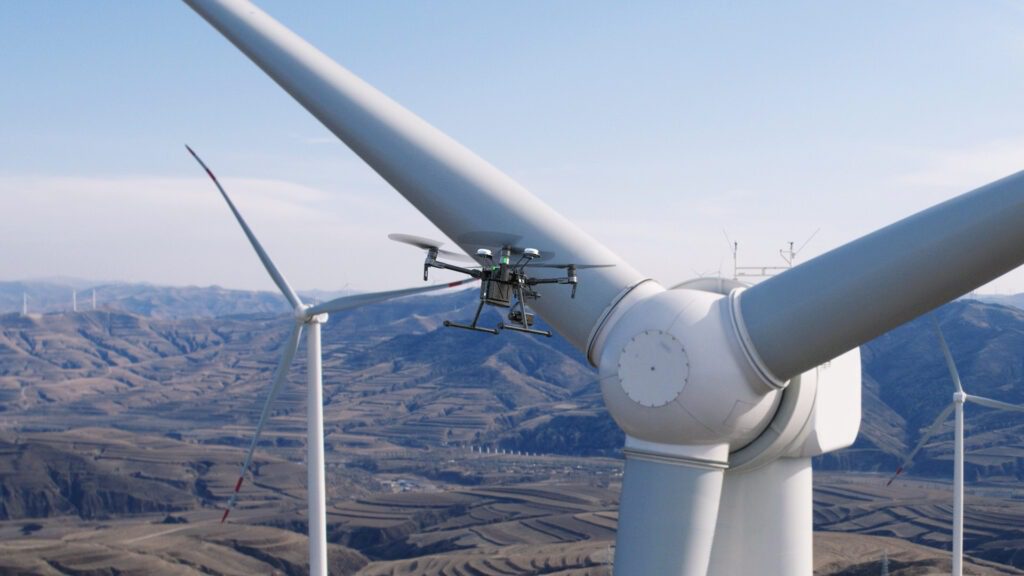Using Drones for Wind Turbine Inspections
Using drones for wind farm inspections offers several advantages that contribute to improved efficiency, safety, and cost-effectiveness compared to traditional inspection methods
Conducting inspections on wind turbines poses numerous risks to workers, particularly due to variations in height, construction, and operational settings. Offshore wind turbine inspections introduce additional hazards, given the unpredictable weather conditions, the journey to reach these sites, and the increased height of offshore turbines compared to their land-based counterparts.
Using drones aims to mitigate safety risks, enhance inspection speed, and improve accuracy, especially considering that some wind farms consist of several hundred turbines requiring bi-annual inspections. The magnitude of the workload becomes evident when accounting for the fact that each turbine unit has three blades with dual chambers. The ability to obtain an accurate condition assessment of the turbines more frequently assists in prolonging their lifespan for a lower cost than if a serious issue is not identified until much later.

Service Group
Methodology
Thermal Inspection
Close Visual Inspection
LiDAR
Benefits over using Traditional Methods
Access to Difficult-to-Reach Areas:
- Turbine Blades: Drones can easily navigate around and inspect the entire surface of wind turbine blades, including areas that are challenging to reach manually or with traditional equipment. This allows for a more comprehensive assessment of blade condition.
Time and Cost Efficiency:
- Quick Deployment: Drones can be deployed rapidly, reducing the time required for inspections. This is crucial for minimising downtime and maximising energy production.
- Reduced Costs: Compared to traditional inspection methods involving manual labor or heavy machinery, drones offer a cost-effective solution for routine inspections and maintenance.
Safety Considerations:
- Minimised Human Risk: Drone inspections eliminate the need for technicians to climb towers or use cranes, reducing the risk of accidents and injuries associated with manual inspections.
- Remote Operation: Drones can be operated remotely, allowing inspectors to conduct assessments from a safe location, further enhancing safety.
Regular Monitoring:
- Frequent Inspections: Drones enable more frequent inspections, allowing for the monitoring of turbine condition over time. This helps identify trends and patterns that can inform maintenance schedules and optimise performance.
Data Collection and Analysis:
- Comprehensive Data Sets: Drones collect a wealth of data during inspections, including images, videos, and sensor readings. This data can be processed and analysed using specialised software to generate comprehensive reports on the condition of wind turbines.
Environmental Impact Assessment:
- Wildlife Monitoring: Drones can be used to monitor wildlife around wind farms, helping to assess and mitigate potential environmental impacts.
